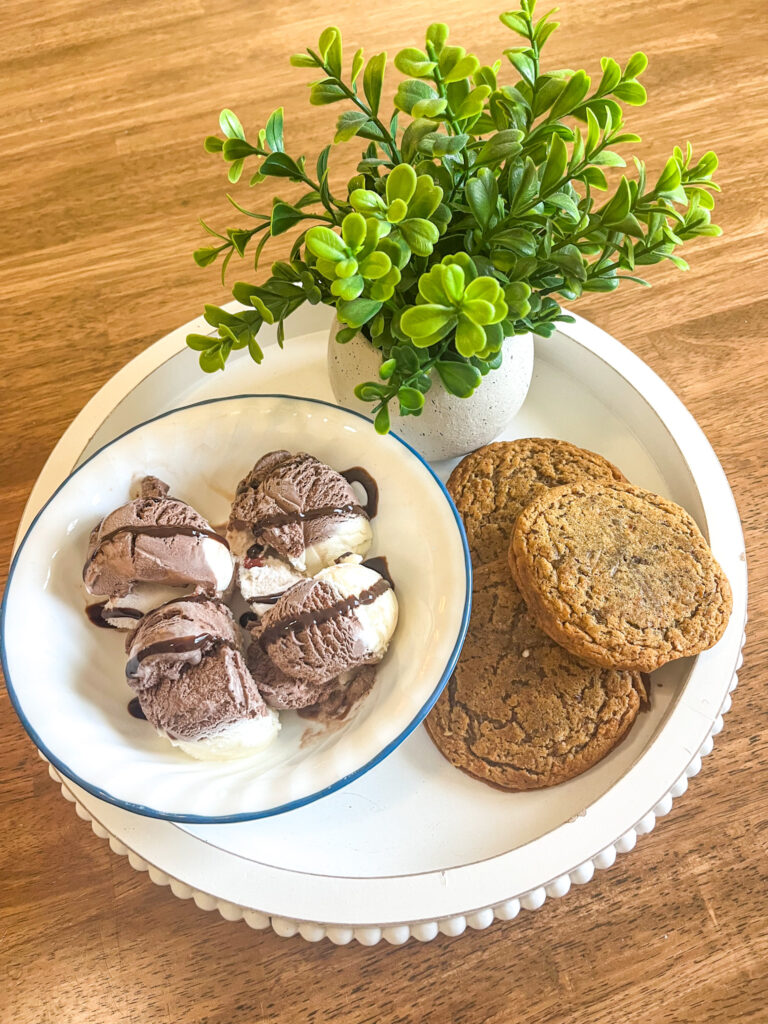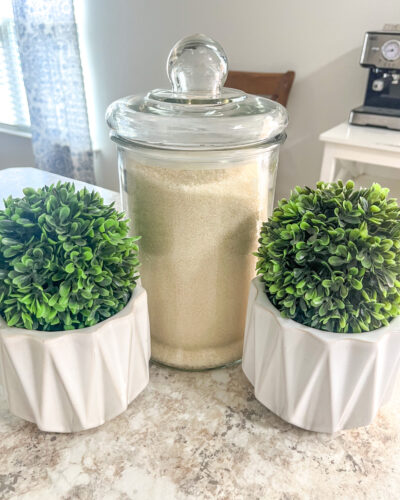
What Is It?
High fructose corn syrup is made from corn starch. In the factory, enzymes are added to the starch, breaking down the starch into glucose. Then another enzyme, D-xylose isomerase, is added to the syrup changing some of the glucose molecules into fructose molecules. (Wikipedia) High fructose corn syrup contains both glucose and fructose.
History of High Fructose Corn Syrup
World War One
After World War One, the demand for corn decreased. Farmers had been used to producing a lot of corn to send to war-torn Europe, but now there was an excess of corn in the market. As a result of this, the price of corn went way down according to Wikipedia.
Agricultural Adjustment Act
When the Great Depression hit, the US government stepped in. They created the Agricultural Adjustment Act and started paying farmers to produce less corn and other crops such as wheat, cotton, rice, peanuts, tobacco, and milk. Most of the time, subsidies are given for planting more of a crop instead of less. In this case, the government was trying to limit the corn on the market to increase the price. Since farmers received subsidies (money from the government) for corn, more farmers started planting only corn. They knew the government would bail them out if their crop failed, and it was less expensive to specialize in one crop than to plant several different crops on their land. (Wikipedia)
Present Day
Because of the Agricultural Adjustment Act, there is now an excess of corn in the market. High fructose corn syrup is cheaper to produce and export than sugar and is lighter than sugar crystals. For this reason, many food companies will use high fructose corn syrup instead of sugar in their products.
Is High Fructose Corn Syrup Hurting Our Health?
GMOs
Scientists have created a new breed of corn. This corn contains Bt which is a soil bacterium. PubMed Central says this bacterium makes crystal protein toxins. When an insect eats this bacterium, these toxins wreak havoc on its gut lining, and the insect eventually dies. Bt was first sprayed on plants in the 1960s, but the scientists decided to breed the soil bacterium into corn seeds to curb pests. If Bt affects the gut lining of insects, what do you think it does to our gut lining? Americans eat a lot of corn since it’s in so many packaged foods. No wonder our gut health is compromised.
Glyphosate
In the 1990s, scientists also decided to breed corn that is tolerant to the pesticide, glyphosate. According to PubMed Central, in 2015, glyphosate was classified as a possible human carcinogen. The farmers spray glyphosate on the corn at the beginning of the growing season and throughout the season. Corn crops could be sprayed up to three times. That’s a lot of chemicals in our food supply! People eat corn almost every day because it is in so many products. They are ingesting a lot of glyphosates which could possibly lead to cancer.
Blood Sugar
Consuming high fructose corn syrup makes blood sugar levels skyrocket. For example, if you drink a coffee with creamer containing high fructose corn syrup, your blood sugar levels will spike and come crashing down a few hours later. The effect on your blood sugar will be even greater if you drink this sugar-filled coffee on an empty stomach without eating protein or fat for breakfast. After your blood sugar crashes, you will want another energy boost. You drink a soft drink at midday, and your blood sugar levels will spike again. This spike will result in another crash in energy a few hours later, and the cycle will continue over and over. So many people have sweetened coffee first thing in the morning and don’t eat breakfast. They then wonder why they experience fatigue a few hours later and want a soft drink to boost their energy levels. Not realizing their body is on a roller coaster ride of blood sugar spiking and crashing, they don’t do anything to balance their blood sugar. This cycle will lead to insulin resistance and possibly type 2 diabetes.
The liver is the only organ in your body able to process fructose. However, it can only handle less than 50 grams a day. (PubMed Central)
The Liver
When you consume too much fructose, you can overwhelm your liver. PubMed Central says this may lead to non-alcoholic fatty liver disease and a host of other health problems.
Sources of High Fructose Corn Syrup
- Candy
- Coffee creamer and syrups
- Condiments
- Fruit Drinks
- Ice Cream
- Packaged Sweets
- Popsicles
- Processed Food
- Pancake syrup
- Sauces
- Soda
According to statistica, more than half of Americans drink soft drinks multiple times a week if not daily. In 2018, the average soda consumption per person was 38.87 gallons per person! That’s a whole lot of soda. No wonder Americans are sick and tired, and many have diabetes. In fact, Americans have the highest rate of diabetes among developed nations. (Endocrine News)
What Can I Do?
Avoid soda and sugary drinks. Many people enjoy soft drinks because the fizz feels good on their throats. If you like the fizz of carbonated beverages, start drinking flavored sparkling or seltzer water.
Another option is to drink unsweetened tea or plain water. Make sure to filter your water. If you don’t like the taste of plain water, add some lemon juice or other fruit to change it up.
Check the labels when you buy ice cream. Many brands still use sugar. For instance, Breyers uses sugar in the following flavors: natural vanilla; chocolate; vanilla chocolate; and vanilla, chocolate, and strawberry (Neapolitan).
When buying condiments and sauces, try to avoid high fructose corn syrup. Look for brands that advertise no high fructose corn syrup on their packaging.



[…] sugar is about half fructose and half glucose. As I mentioned in “The Spill on High Fructose Corn Syrup”, your liver is the only organ in your body with the ability to process fructose. But it can only […]